


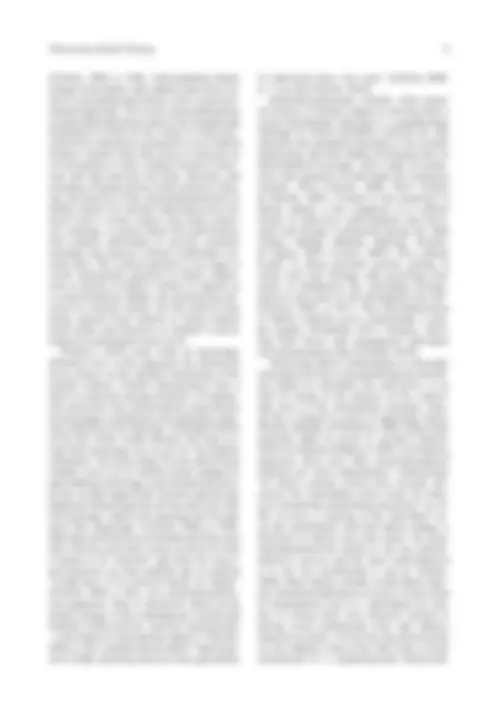

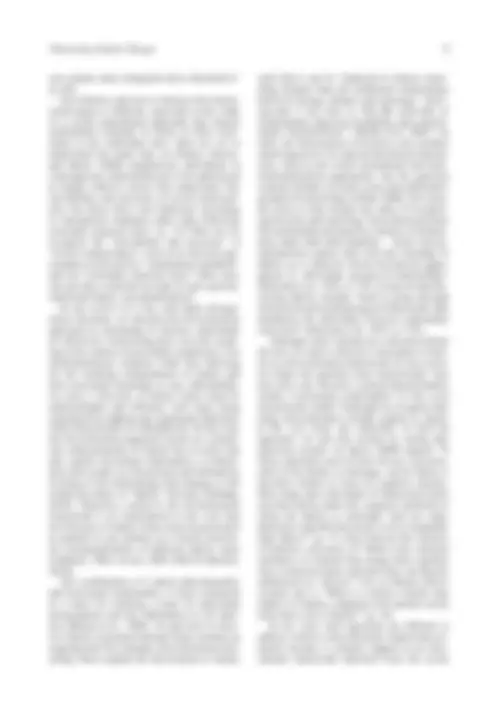

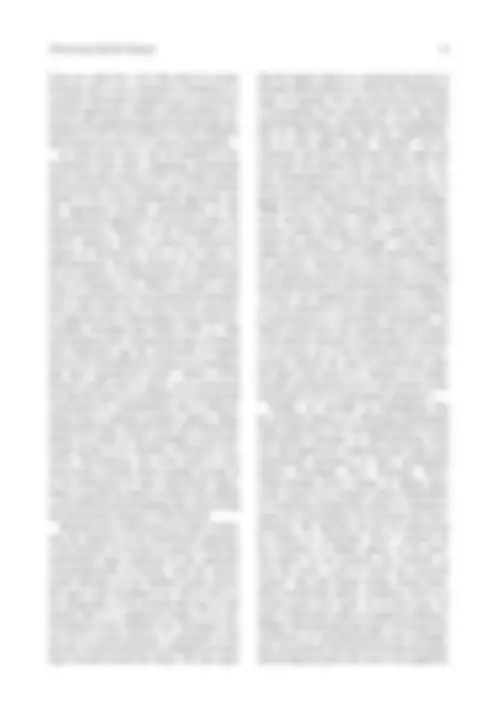
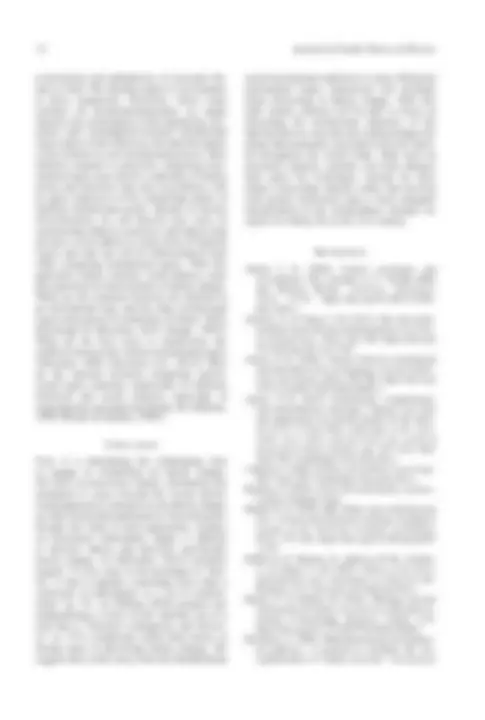
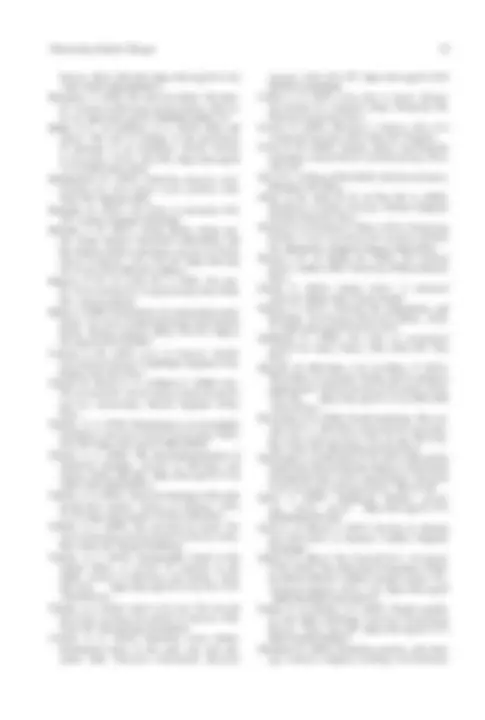



Study with the several resources on Docsity

Earn points by helping other students or get them with a premium plan


Prepare for your exams
Study with the several resources on Docsity

Earn points to download
Earn points by helping other students or get them with a premium plan
Community
Ask the community for help and clear up your study doubts
Discover the best universities in your country according to Docsity users
Free resources
Download our free guides on studying techniques, anxiety management strategies, and thesis advice from Docsity tutors
Theorizing Family Change: vertical and horizontal relationality and socail institutional.
Typology: Study notes
1 / 18

This page cannot be seen from the preview
Don't miss anything!











Stan J. Knapp and Greg Wurm Brigham Young University
We review how recent family scholarship theo- rizes recent family change as either a process of deinstitutionalization, in which family can no longer be understood in institutional terms, or a process of diversification, in which family life is expanding but not losing its institutional char- acter. We argue that both approaches emerge out of and depend on a social institutional framework for understanding family that was developed in 20th-century sociology. Despite producing a wealth of research, both approaches have difficulty adequately conceptualizing the institutional character of family and providing ways of theorizing family change. We introduce an alternative to a social institutional frame- work, a Weberian institutional logics approach, which provides a different way to understand the institutional character of family life and thereby affords new interpretations and avenues for theory and research on family change in the 21st century.
The most recent Wiley-Blackwell Companion to the Sociology of Families opens its overview of current scholarship on families by proclaiming, “We live in extraordinary times” (Treas, Scott, & Richards, 2017, p. xvi). Indeed. A prominent family historian asserted that “the relations between men and women have changed more in the past 30 years than they did in the previous three thousand,” proceeding to argue that “a
Sociology Department, Brigham Young University, 2041 JFSB, Provo, UT 84602 (stan_knapp@byu.edu).
Key Words: Deinstitutionalization, diversity, family change, individualization, institutional logics.
similar transformation [has occurred] in the role of marriage” (Coontz, 2005, p. 4). We live in fascinating times for family scholars as the scope and depth of social change have produced dramatic and profound questions related to the study of family life. Surely, the extraordinary times we live in oblige the very best theoretical work we can produce. How are family scholars theorizing recent family change, and what is the best way to do so? The topic is so expansive and challenging that it would tax the limits of the most capable of scholars to fully address it. Undoubtedly, both the range of possible research to include and the theoretical approaches one could incorporate are beyond the scope of any single article. Nev- ertheless, our review contends that the primary theoretical background for understanding family change remains the social institutional frame- work grounded in the work of Émile Durkheim and developed by Talcott Parsons in American sociology in the 20th century. In the late 20th century, the debate around family change cen- tered on whether the family as a social institution was experiencing family decline or moving through a period of family adaptation. Today, however, the debate has moved away from how well family is performing its important functions as a social institution to whether family can be regarded as having institutional dimensions at all. Is family life today experiencing deinstitu- tionalization, such that family is becoming so individualized that it is no longer best under- stood in institutional terms? Or is family life experiencing diversification that expands but maintains a capacity for speaking of family in some sort of institutional terms? Despite the fact
Journal of Family Theory & Review (2019) 1 DOI:10.1111/jftr.
2 Journal of Family Theory & Review
Table 1. Typology of Family and Theorization of Family Change
Vertical Relationality Horizontal Relationality
Singular dimensionality I: Social institutional (adaptation or decline) II: Noninstitutional (deinstitutionalization) Plural dimensionality IV: Institutional logics (differentiation) III: Postinstitutional (diversification)
that the deinstitutionalization and diversification approaches are both critical of the 20th-century social institutional approach to family, they are also both highly dependent on it for the theoriza- tions of family change they produce. We show that both approaches offer compelling interpre- tations of family change that have invigorated family scholarship, and will continue to do so, and provide important contexts for interpret- ing issues related to family change. However, we also submit that both approaches encounter problems in maintaining a theorization of family change as specifically family change. We conclude our review by raising the prospect of a fundamentally different starting point for theorizing the institutional character of family, a starting point derived from a frame- work provided in the work of another founder of sociology, Max Weber, and developed more fully in the contemporary literature on institu- tional logics. A Weberian approach has had vast influence within sociology more generally but has not found a presence in the family field. Although we lack the space and do not attempt to fully develop and argue for a Weberian insti- tutional logics framework, we suggest that this alternative approach to theorizing the institu- tional character of family could enable a family scholar to explore and assess contemporary changes in family life in new ways.
Family as a Social Institution and Theorizing Family Change
Building on the work of Émile Durkheim (1982), sociologists have often understood themselves as engaged in “a science of institu- tions” focused on delineating “their genesis and functioning” (p. 45). Within this Durkheimian approach, developed more fully in the work of Talcott Parsons (1951; Parsons & Bales, 1955), sociology came to theorize modern societies as composed of a set of core social institutions: the economy, polity, religion, law, education, and the family. Family was understood in terms of its place in society and its important functions such as reproduction, socialization, and care for
the emotional needs of members of society. As a social institution, the family was conceptualized as a particular social structure with established roles, norms, and values for regulating individ- ual behavior in such a way that it enabled the performance of its vital functions (Eisenstadt, 1968; Turner, 1997). By the late 20th century, the debate over family change was framed in terms of family decline or family adaptation and resilience. For some, family change signified a problematic case of disintegration and loss of institutional viability (Blankenhorn, 1995; Popenoe, 1993), with social science research establishing the detrimental effects of such change (Lerman, 2002; Putnam, 2001; Waite & Gallagher, 2000; Wells & Rankin, 1991). For others, family change indicated a form of “adaptive upgrading” (Abrutyn & Turner, 2011, p. 295) whereby the family as a social institution was changing in ways to facilitate its new place in a shifting system of social institutions. Despite the prominence of conceptualizing the family as a social institution in the 20th cen- tury and the intensity of the debates surrounding family resilience and decline, recent family scholarship has shifted in important ways, yet it has done so without leaving the framework for theorizing family and family change provided by the social institutional approach. To adequately review these shifts and to facilitate insight into the limitations of remaining within the purview of a social institutional framework, we create a typology of different approaches to under- standing family and subsequently theorizing family change (see Table 1). In our typology we focus on two aspects: the relationality, whether vertical or horizontal, and the dimensionality, whether singular or plural, of the theorization of family and family change. The conceptu- alization of relationality centers on theorizing how a phenomenon relates to that which is other than itself as either higher or lower than itself (vertical) or equivalent (horizontal). The conceptualization of dimensionality refers to the way a phenomenon relates to itself, that is, whether it centers on itself as composed
4 Journal of Family Theory & Review
group argue that attempts at liberation from the deficiencies of the social institutional approach have too easily slipped into a simplistic the- orization of recent family change in highly singular terms such as deinstitutionalization or individualization. Instead, these family scholars contend that individuals are not forming rela- tionships solely from within, solely by and for the individual, but that contemporary personal life is best characterized as individuals in rela- tionships, to which negotiation and contingency are fundamental. We characterize this third approach as postinstitutional in the sense that it accepts some of the features of an institutional framing of family but is nevertheless “post” or critical of them even as it accepts them (the term post does not mean “after” but rather that the position accepts a particular stance even as it is also critical of it). For a postinstitutional approach, then, the kinds of relationships and contexts in which personal life is lived are characterized by a fundamental diversity. There is no singular “family” dimensionality, and the resultant diversity of relationships exempli- fied in contemporary social life must also be understood in terms of a fundamental horizontal relationality. This third approach theorizes fam- ily change as a process of diversification rather than deinstitutionalization. Finally, with our typology, we are able to frame a fourth approach that is currently not found in the family literature, and we offer a brief, suggestive introduction to its possible development. The approach we have in mind, a Weberian approach, has a long history and has recently been developed and applied as an insti- tutional logics approach to a variety of fields. Drawing on Weber’s concept of modernity as a set of competing value spheres, this approach focuses on how distinct institutional logics, val- ues, goods, or “gods,” as Weber might put it, are both invoked and evoked in different institu- tional spheres. Rather than viewing the domain of the family as a social institution with a coher- ent set of norms that structure its form, function, and meaning, or as a domain to no longer to be understood within an institutional frame, or as a domain understood as capable of being in some way indefinitely expansive of itself in diverse ways, the institutional logics approach takes up the question of family by delineating its own “in- ner logic” and differentiating the “familial” from other competing institutional logics. In this way,
an institutional logics approach allows schol- ars the possibility of differentiating family from other forms of social life in a vertical relational- ity even as it also allows for theoretical attention to the plurality of possible dimensions and fea- tures that are expressive of an institutional logic. Instead of theorizing family change in terms of diversification that often leaves its institutional character unclear, the institutional logics frame- work theorizes family change in terms of its dif- ferentiation from and relation to other competing institutional logics at work in modern societies. In the context of our review, this fourth frame- work for theorizing the institutional dimension of family life may provide a basis for producing more adequate depictions of the character and significance of family change today.
Deinstitutionalization: Theorizing Family Without Institutional Elements Most scholarship on recent family change describes the family as in a state of deinsti- tutionalization (Cherlin, 2004), disintegration (Purcell, 2002), detraditionalization (Gross, 2005), and demarriage (Théry, 1996). Family change is theorized as moving from a previ- ously institutionalized state to an increasingly deinstitutionalized form, such that family itself is conceptualized in noninstitutional terms. In many ways deinstitutionalization has long been a way of conceptualizing 20th-century family change as family scholars viewed the family as moving “from institution to companionship” (Burgess & Locke, 1945). Yet it is important to recognize that when contemporary scholars reference family change in terms of deinsti- tutionalization, they have moved away from the first framework in our typology, a social institutional approach that would examine the changing character of family and its place as a social institution in society. Instead, adopting a second, new framework for understanding fam- ily and family change, they examine whether “family” can provide an institutional context for the self (Cancian, 1987), thereby changing the focus from “the family in society” to a focus on the weakening of cultural and social structures that regulate and constrain individuals in their construction of personal life. According to one of the most widely refer- enced articulations of this view, deinstitution- alization primarily refers to “the weakening of the social norms that define people’s behavior”
Theorizing Family Change 5
(Cherlin, 2004, p. 848). Understanding family change in normative and cultural terms was cen- tral to conceptualizing family in the social insti- tutional approach. Yet recent conceptualizations of deinstitutionalization narrow the institutional dimension to focus on the extent to which per- sonal life is ordered by a normative set of cultural features, features that offer actors a coherent set of conventions or rules, whether formal or infor- mal, and that structure the form, function, and meaning of human action. In this narrower fram- ing, the question of the deinstitutionalization of family focuses on whether individual actors are faced with a social context that lacks norma- tive ordering, a context filled with ambivalence that requires individuals to actively construct meaning and practice without established cul- tural rules. The central question is no longer a social institutional question of family adapta- tion or decline in family’s ability to operate as a social institution. Rather, the question has nar- rowed to whether family life has shifted from being ordered from without to being ordered from within, and therefore to whether it can be framed in institutional terms at all. Cherlin’s (1978) early work on remarriage illustrates how in this approach the theoretical focus centers on the internal constitution of the marital relation. Cherlin demonstrated how a lack of consensus among members of stepfam- ilies about the roles and normative expectations in remarriages contrasted to the normative order- ing common to first marriage. Although Cherlin in the late 1970s would interpret this lack as a sign that remarriage was as yet an “incomplete institution,” the intervening 25 years did not help solidify a new set of cultural norms adapted to and enabling remarriage as an institutional form. In fact, he later argued that “just the opposite has happened. Remarriage has not become more like first marriage; rather, first marriage has become more like remarriage” (Cherlin, 2004, p. 848). Marriage itself has lost its institutional form such that even the most basic issues involved in what it means to be “married” and what the associ- ated practices are that establish one as married “would have to be resolved family by family” (Cherlin, 2004, p. 851). In a deinstitutionaliza- tion approach, what is distinctive about recent family change is that contemporary marital and familial worlds must be “actively construct[ed]. .. with almost no institutional support” (Cherlin, 2004, p. 851), and that this produces “family pat- terns unlike anything that previous generations
of Americans have ever seen” (Cherlin 2009, p. 7; see also Cherlin, 2010). Deinstitutionalization scholars often depict the history of marital change as moving from a social institutional ordering to a companionate marriage in which normative controls are still operative but grounded internally to the marital partnership, and then finally developing into an individualized marriage with a lack of norma- tivity and openness to individual life formation (Amato, 2012; Cherlin, 2005, 2014; Fomby & Cherlin, 2007). Central to this depiction of family change is the expansion of a cultural model of expressive individualism that devel- oped and became widespread during the 20th century (Bellah, Madsen, Sullivan, Swidler, & Tipton, 2007; Coontz, 2005). This cultural model “is about personal growth, getting in touch with your feelings, and expressing your needs. It emphasizes the continuing develop- ment of your sense of self throughout your life” (Cherlin, 2004, p. 851). This individualization of family relations gives relationships a mar- ket quality (Friedland, 2011; Gregory, 2012) that both favors and presupposes individual self-determination (Deci & Ryan, 2010). Theorizing family relationships as internally constituted involves conceptualizing the individ- ual subject as internally free and active, or at least as acting in the absence of the control- ling force of the institutional elements. Fam- ily life is framed in terms of individual choice (Weeks, Heaphy, & Donovan, 2001) rather than elements taken as given or ascribed (Smyth, 2016). In Anthony Giddens’s (1991) well-known depiction, these new, fully deinstitutionalized relations are “pure relationships,” relationships “in which external criteria have become dis- solved: the relationship exists solely for what- ever rewards that relationship can deliver” (p. 6). We see here a framing of the individual ver- sus the institutional, such that family change is theorized in almost zero-sum terms: the more institutionalized the family is, the less individ- ualized it can be; and the more individualized it is, the less institutional it can be (Amato, 2004). Most family scholars would likely inter- pret deinstitutionalization in terms of some kind of emancipatory lens (i.e., individuals are now free to choose their own lifestyles instead of having social institutional roles and statuses imposed on them). Yet the key theoretical point we are making is that in the shift from a social institutional to a noninstitutional framework,
Theorizing Family Change 7
contradictory elements in its theorizing of fam- ily change. In identifying “diversity” as central to this approach, we emphasize how its most essential defining feature is its commitment to negation: the denial of any singular concep- tion of “the family” as normative (McClain & Cere, 2013). Diversification scholarship shares a framework that stands diametrically opposed to the social institutional approach, which theorizes family in terms of a singular dimensionality as well as a vertical relation- ality. Arguing that “to speak of ‘the family’ often obscures more than it reveals” (Mason, Skolnick, & Sugarman, 1998, p. 1), the proper theoretical move is to give up “the search for a uniform definition of family or household in favor of contingent characterizations in different cultural contexts” (Creed, 2000, p. 330). This negative theorization and oppositional stance to a social institutional approach, with its formal obligations and externally dictated roles, has facilitated much recent research on the diver- sification of family life (Demo, Allen, & Fine, 2000). Nevertheless, individualization and deinstitu- tionalization scholarship also oppose a social institutional approach. Indeed, as Levin (1999) pointed out, “The individual’s social construc- tion of family suggests that not only one, but numerous concepts of family exist” (p. 93). In addition, an emphasis on the diversity of family forms often entails the hope for a family life in which “individuals can relate to each other sim- ply ‘as such,’ without the interference of ‘dis- torting’ social forms” (Gardner, 2006, p. 238). Why not, then, fold scholarship that emphasizes the diversification of contemporary family life into a deinstitutionalization framework? In many ways, this is one of the theoretical challenges a diversification framework faces. Indeed, the focus on the emancipatory possibilities of new family forms, common to virtually all diversifi- cation scholarship, could easily slip into theoriz- ing family in noninstitutional terms, which ends up privileging individualization. In general, we have found that the diver- sification scholars stand opposed to rendering the proliferation of personal relationships and family forms as a process of an individual- ized deinstitutionalization because it tends to overestimate the autonomy of the individual and the individualistic character of personal life (Finch & Mason, 2013; Jallinoja & Widmer, 2011; Jamieson, 1999; Kagitçibasi, 1996, 2005;
Roseneil, 2009; Roseneil & Ketokivi, 2015; Williams, 2004). Diversification scholars argue that the “evidence serves to refute those who claim that personal relationships are becom- ing more transitory and superficial, associated with the inevitable advance of a deterministic process of individualization” (Pahl & Spencer, 2010, p. 197). Therefore, in contrast to a deinsti- tutionalization account, diversification scholar- ship seeks to account for family change in ways that conceptualize the individual in more social, relational, and even “institutional” terms (Ris- man, 2015). Hence, we characterize this third approach as “postinstitutional” because even as it is critical of the social institutional approach it also opposes deinstitutionalization and sees the need to find some institutional elements in con- temporary family life. Debates within a diver- sification approach often center on how to con- ceptualize the individual in relationships without resorting to either social institutional or highly individualistic, deinstitutionalized conceptions. Can family scholarship recognize the grow- ing plethora of diverse family relationships but without resorting to theorizing the individual as the centerpiece, the singular dimension around which all the relationships turn? Is it possi- ble to theorize diversity and maintain some sort of institutional elements in doing so? Just how to theorize family change while emphasizing diversification is not an easy theoretical task. What will form the center around which the forms of diversity hold? In what follows, we illustrate the postinstitutional approach and its challenges with a review of a couple of attempts to theorize the diversity of family life while also avoiding a highly individualistic, deinstitution- alization framework. For some diversification scholars, the best course is to form the theoretical center around personal life or personal relationships and in this way allow for the accommodation of a plural dimensionality. The work of Carol Smart and colleagues exemplifies this approach (Smart, 2007; Smart & Neale, 1999). Smart and Shipman (2004) challenged the depiction of modernity and individualization as “marching inexorably forward together,” insisting that “the individualization thesis can slide into becoming less a form of sociological analysis and more a moral rant” (p. 493). According to this view, the narrow framing of deinstitutionalization narratives is expedited by positivistic concep- tions of social science that produce research
8 Journal of Family Theory & Review
that facilitates the “monochrome” theorizations found in both social institutional and individ- ualization accounts. What is needed today, Smart argued, are more concrete examinations of the complexities and diversities of ways that individuals live in contemporary relation- ships. The argument is that qualitative empirical work that examines how relationality, memory, biography, the imaginary, and embeddedness are involved in how family life is formed and lived will show “elements of individualization mixed with aspirations to retain elements of the traditional” (p. 501). In this view, a more accurate and less theoretically monochrome way to conceptualize recent family change is to see how “kinship ties and obligations provide the context for choice” (p. 498), and that such individual choice is formed on a “continuum. .. where individualization and tradition are balanced” (p. 499). Individuals do not just make sense of their lives ex nihilo but are embedded in webs of relationships that provide the raw materials from which they then reflexively pick and choose the parts that are most meaningful for them. Likewise, Pahl and Spencer (2010) argued that good empirical research demon- strates that, “far from being isolated, anomic, or narcissistically self-focused, people may still feel connected and committed to others, through their personal communities, in a significant and meaningful way” (p. 207). In this way, a diversification approach claims to offer a better characterization of the current state of family change than individualization accounts. Recent family change that involves a shift away from a social institutional family exposes how personal life today is a reflection of how individuals construct relationships through drawing on institutional elements in diverse and creatively adaptive ways. A different approach to theorizing diver- sification focuses on placing processual or practice-oriented conceptions of family and family change as the theoretical center (Morgan, 1996). This approach emphasizes how there are multiple ways to “do” family (Bulanda, 2011; Hudak & Giammattei, 2014; Nelson, 2006; Sarkisian, 2006; Takacs & Kuhar, 2011). In acknowledging that family can be under- stood in many ways (Bernardes, 1986, 1999), this approach centers on thinking of family as an adjective or a verb instead of a noun (Morgan, 1996, 2011) or as a performance instead of a fixed identity (Butler, 1988). Such
a practice-centered approach avoids individual- ization by showing that “one’s actions have to be both conveyed to and understood by relevant others if those actions are to be effective as constituting ‘family’ practices” (Finch, 2007, p. 67). Only through these acts of display can participants “thereby confirm that these relation- ships are ‘family’ relationships” (Finch, 2007, p. 73). Consequently, even though individuals will “do” family in the way they understand it, they will also focus on making sure they display their doing family in a way that can secure others understanding of it as family (Dermott & Seymour, 2011; James & Curtis, 2010). Consonant with a resistance to social institu- tional framings, practice-centered approaches emphasize that family life is oriented to its rela- tional context “rather than [to] conformity with a typical organizational form” (Smyth, 2016, pp. 679–680), but in contrast to deinstitutional- ization accounts, such practices entail creative and reflective institutional constructions. Although other diversification scholars focus more concretely on theorizing changes in family meanings (Gillis, 2002; Gross, 2005; Lewin, 2004; Wall & Gouveia, 2014) or family con- figurations (Schadler, 2016; Widmer, 2016; Widmer & Jallinoja, 2008), the basic argu- ment across these approaches is that both the singular normative social institutional family and the individualized “pure relationship” exist only in the abstract as theoretical idealizations (Jamieson, 1999). What is needed is a way to recognize the contemporary diversity of family life while also maintaining an ability to theo- rize the institutional aspects of family life. As Sprey (2009) argued, the “choices to divorce, to remarry, to be a stepparent, to cohabit contractu- ally, or to marry someone of the same sex need to be understood and studied as components, rather than problems or weaknesses, of the institutionalization of the contemporary family and marriage” (p. 17). Thus, the multiplicity that characterizes contemporary family life is interpreted less as a sign of deinstitutionalized individualism than as the transformation of “family” to incorporate its (former) “alterna- tives” into some kind of common frame. As Lauer and Yodanis (2010, p. 68) emphasize, recognizing diversity does not require theorizing the loss of institutionalized family forms: “We consider alternatives to marriage to be parallel with marriage, and more or less institutional- ized themselves, but the institution of marriage
10 Journal of Family Theory & Review
institutional approach. This inheritance leads diversification scholars to conceive of the insti- tutional as external to the individual, equivalent to normative regulation that is counterposed to the individual, and as dependent on conceptions of vertical relationality that tie the institutional into some sort of broader system functionality that unjustly privileges some family forms over others. All these conceptualizations of the insti- tutional can be rethought within the Weberian framework to which we now turn.
Institutional Logics: Differentiation of the Familial
In this section, we suggest that by reframing how we theorize the institutional character of family we can avoid problematic positions that merely assume family as a necessary part of society (social institutional), deny it (noninstitutional), or relativize it (postinstitutional). Much like the diversification approach, we see the need for a framework that recognizes institutional elements of family life without returning to the problematics of the earlier Durkheimian and Par- sonian social institutional approach (Duncan, 2011; Smyth, 2016). Yet, in contrast to the diversification approach, we agree with Gilding (2010) that “to reconceptualize the family as reflexive practice [postinstitutional] or dispense with it altogether [noninstitutional] throws out the baby with the bath water” (p. 774). In light of our review of recent theorizing of family change, we suggest an alternative to the social institutional framework and the deinstitutional- ization and diversification approaches that have developed out of it. In the limited space remaining, we present an approach to theorizing family and family change that draws on Max Weber’s conception of modernity as a field of competing and differ- entiated value spheres (Bellah, 1999; Brubaker, 2013; Symonds, 2015; Weber, 1978, 2004) as well as institutional logics theory (Friedland, 2009, 2013, 2014b; Friedland & Alford, 1991; Thornton & Ocasio, 1999, 2008; Thornton, Oca- sio, & Lounsbury, 2012). Within a Weberian framing, the institutional dimensions of moder- nity are understood in terms of distinctive and competing “life orders” or “value spheres,” each of which is formed in terms of its own “in- ner logic” or “immanent lawfulness,” as Weber (2004) would put it. Each value sphere has its own inner logic, but it is also enabled, identified,
and constituted through the differentiation of its institutional logic from against other compet- ing institutional logics. While Weber delineated as “value spheres” certain aspects of modernity such as the familial, the scientific, the political, the economic, the religious, the aesthetic, and the erotic, more contemporary institutional the- orists add as institutional orders such things as communities, professions, law, and corporations (Fairclough & Micelotta, 2013; Thornton et al., 2012). To our knowledge, no scholars have explicitly used this framework to examine family or family change, with the exception of Friedland’s com- parative analysis of Italian and Southern Califor- nian logics of romantic love (Friedland, 2014a; Friedland & Gardinali, 2013; Friedland, Mohr, Roose, & Gardinali, 2014). Therefore, our argu- ment is theoretical and proposes shifting the framework within which family scholars con- ceptualize central issues and questions. An insti- tutional logics approach reconceptualizes the nature of the institutional as the confluence of subjects, objects, and practices ordered in terms of a logic associated with an institutional sub- stance. The institutional aspect of family life is no longer characterized in terms of some- thing exterior, something outside the subject, that imposes order on the subject (Smith, 2003, 2010, 2015). Neither are institutional aspects simply conceived in terms of orderly patterns produced through habituation or normative pow- ers (Berger & Kellner, 1964; Lauer & Yoda- nis, 2010). Likewise, the individual subject is reconceptualized as neither the passive, social- ized subject of a social institutional approach nor a recalcitrant, autonomous source of agency and individualized subjectivity as in noninsti- tutional and postinstitutional accounts. With a family sphere theorized as having its own insti- tutional logic, family scholars will not be lim- ited to theorizing family and family change as something produced by a social system for itself (social institutional), by individuals acting for themselves (noninstitutional), or as merely the product of reflexive agents pursuing personal relationships through negotiation and adaptation (postinstitutional). For an institutional logics approach, the subject–institution relation is not antagonistic but constitutive, such that we find it difficult to theorize one without the other. The relation of the subject to the institutional is such that the subject is a “true believer” or a “lover” of
Theorizing Family Change 11
the substance of the institutional. Building on Weber’s sociology of religion, the substances that center institutional logics are framed as like “gods” that are loved or worshipped by their subjects (Friedland, 2014b). Thus, the human subjects who participate in institutional orders (e.g., scientist, politician, business owner or leader, artist) are formed through a relation to a “divine” institutional substance, a relation that possesses the subject in the sense of expe- riencing a power that is greater than the self and enables the subject to be the subject he or she is. Charles Taylor’s (1985) distinction between weak and strong evaluation develops this point well (Smith, 2003). Applied to family, the argument is that there is an institutional order of family if and when family relations are undertaken in terms of strong evaluation(s) that involve being moved by the “higher good” of familial life. Familial subjects “are moved by what is good in it” rather than by how it might benefit them in some instrumental way. In other words, institutional subjects “experience [their] love for [the higher good] as a well-founded love ” (Taylor, 1989, p. 74). As such, it is a love that exceeds the subject, a love in which one gives oneself over to another and yet is given oneself by that other (Friedland, 2014a; Marion, 2007). This conceptualization of the subject is quite distinct from a reflexive self taking up institutional fragments and constructing diverse forms of family life, as in the diversification approach. Family life is therefore composed of familial subjects who are constituted and ordered in a vertical relationality to a familial life that is higher than themselves and who express this constitution in and through objects and practices that are also ordered to an institutional logic. The unification of subjects, objects, and prac- tices in an institutional logic is formed through referencing an institutional substance that stands at the heart of each institutional order. These institutional substances “join subjects, practices, and objects into bundled sets that have an inner referentiality, a performative order, but in which the foundational object—the substance—is unobservable, while being endlessly invoked by name and enacted in practice” (Friedland, 2014b, p. 245). For each institutional order, a valued substance forms subjects who engage in practices with objects that express the sub- stance. Yet even though there is “something” there to which subjects, objects, and practices
are ordered, the institutional substance, “by comparison to the presence of things,. .. is an absent presence towards and around which material practice incessantly moves, known only through this movement” (Friedland et al., 2014, p. 335). The basic idea is to highlight how there is “something,” a something that is neither an idea or value (located merely in the mind or some evaluation imposed by a subject) nor a material object (located merely in the external, visible world) that draws humans to live for it, to receive it as something of such immense importance that it is capable of providing a cen- ter around which subject formations, coherent practices, and diverse objects take shape. This language may be difficult for family scholars, as it takes its inspiration from Webe- rian sociology of religion and recent work in organizational theory to develop the institutional logics approach, yet it enables the expression of a vitally important component that is miss- ing in current debates about family and family change. There is something about family life that is not reducible to individualization or reflex- ive accommodation in ways that diversification scholars have framed it. This something has its own inner logic or coherence to it, and this something is not reducible to any particular dis- course on family, family form, set of family prac- tices, and so forth. Instead, each of these familial subjects, objects, and practices is “familial” to the extent that it references and expresses the familial substance or inner logic of the familial. Perhaps using the adjective familial as a noun is helpful here, for we can designate the familial in adjectival ways that relate to or are sugges- tive of an institutional substance that will remain an absent presence that maintains its own “im- manent lawfulness,” as Weber (2004) would put it. Within this approach, it is possible to talk about the familial without reducing such to “the family” or any fixed form. Indeed, the reduc- tion of the familial to any singular dimension- ality is what is being expressly denied when the theory insists that the institutional substance always remains other than any of its particular expressions. Therefore, an institutional logics approach explicitly denies any reductionism to a singular dimensionality and affirms a plurality of ways of expressing, practicing, and objectifying the familial, but it does so in ways that prevent an accompanying horizontal relationality. The familial, as an institutional logic, can exist only
Theorizing Family Change 13
from sex with love. Lest this point be misun- derstood, this is not a normative evaluation or a systemic functional evaluation as in social insti- tutional approaches. Rather, differentiation ref- erences the empirical point that the internal con- stitution of the lived relation is itself evaluative and formed in terms of a vertical relationality. In what terms, then, can the familial be dif- ferentiated from other competing institutional logics and other forms of life? Certainly neither the structural form of family, such as the nuclear family of the social institutional approach, nor the negotiated personal relationships of the diversification approach will provide a basis for differentiation. Further, as the Friedland et al. (2014) analysis showed, practices themselves cannot in themselves serve as the basis for differentiation: Sexual practices in themselves do not organize or differentiate the institutional logic of romantic love. What is needed is some sort of specification of an institutional substance that is more than any of those forms, practices, or subjectivities in relationships. In an early for- mulation, Friedland and Alford (1991, p. 248) conceptualized the “institutional logic of family [a]s community and the motivation of human activity by unconditional loyalty to its members and their reproductive needs.” Weber (1978) himself would seem to agree, as he positioned the familial sphere as grounded in a nonrational communism or communalism that is differen- tiated from a rational economic sphere. Other institutional logic scholars have also framed the family as a kind of firm grounded in uncondi- tional loyalty of its members (Thornton et al., 2012). Nevertheless, this work tends to refer only briefly to family before quickly moving on to the delineation of other institutional logics. What is needed are family scholars who embark on the difficult and demanding task of theorizing the institutional character of the familial. Because more work needs to be done to delin- eate the character of the institutional substance of the familial, we hesitate to equate a Weberian institutional logics approach to any particular conceptualization of exactly what the institu- tional substance of the familial would consist. We agree with Friedland et al. (2014) that it is the temporality of the institutional logic of the marital that is a significant feature of its dif- ferentiation from romantic love. Romantic love not tied to sexual practices is grounded in the present, whereas marital love maintains an inner logic oriented toward the future. We also agree
that the family sphere is experiencing forms of internal differentiation in which the institutional logic of romantic love has achieved some form of decoupling from marital and other familial institutional logics. Nevertheless, we emphasize that we fully anticipate that the characteriza- tion of what makes family “familial” will be contested, and the institutional logics approach welcomes the debates that will ensue over var- ious interpretations of the familial. In fact, we deem such dialogic theorizing to be necessary to good scientific analysis of the familial (Knapp, 2009). Just as the institutional sphere of science itself involves intense conflict over just what science entails and just how to grant scientific claims the status of “knowledge,” so the family sphere itself will involve conflict and debate over its character. And just as a diversity of thought with regard to science does not require a leveling such that all kinds of individualized meanings of “science” are regarded as equivalent, so debates over the character of the familial do not require a commitment to a horizontal relationality. As Weber would show, the significance and vitality of the debates internal to a value sphere (whether it be science, art, or the familial) does not nec- essarily indicate the lack of institutional order but rather may attest to it. Debates over funda- mentals can themselves be a vital element in the performative life of institutional substances. Finally, we conclude by highlighting that an essential feature of a Weberian institutional logics approach is the conceptualization of each institutional substance as differentiating itself over and against the competing inner logics and institutional substances of other institutional spheres (Friedland, 2013; Symonds, 2015). Understanding family change as taking place in the context of a complex, plural relationality of competing institutional goods or substances opens new possibilities for portrayal and inter- pretation. The familial can now be understood in relation to competing “loves” inspired by the economic or market sphere, by the polit- ical sphere, by the aesthetic, the scientific, or even the erotic—each of which has powerful “goods” that pull human beings toward them. Each institutional sphere constitutes itself as a worthy good, even “god,” as we have seen. As such, it inherently seeks to expand its influence: Market-based institutional logics will inspire the worthiness of individualization and consump- tion, the political will promote formal rationality and ideological purity, the erotic will expand the
14 Journal of Family Theory & Review
eroticization and authenticity of personal life, and so forth. The familial sphere is not immune to these expansions. Therefore, where some scholars see deinstitutionalization, we might theorize the colonization of the familial by eco- nomic and consumption-oriented institutional logics and so forth. However, the familial sphere is not without its own institutional powers. How families respond to powerful, competing insti- tutional logics may involve a plurality of family forms and practices that may nevertheless still be quite expressive of the compelling nature of familial institutional goods. Instead of merely diversification, we can theorize new ways of constructing subjects, practices, and objects that all more or less adhere to some form of familial logics and that can still be differentiated from other competing institutional logics. With this approach, family scholars could address some key questions for theorizations of family change. What are the relations between the familial as an institutional logic and the other institutional logics and aspects of modernity (Colaner, 2016; Fairclough & Micelotta, 2013; Regan, 1993)? What are the best ways to characterize the conflicts between the various institutional logics (Thornton, 2004; Thornton et al., 2012)? How do the tensions between competing institu- tional logics manifest empirically in different historical and social contexts, especially in contemporary personal and family life (Heimer, 1999; Heimer & Staffen, 1998)?
Conclusion
Now is a stimulating but challenging time to engage in scholarship on family change. We have reviewed how family scholarship has attempted to move beyond the social institu- tional approach to interpret recent family change as either deinstitutionalization or diversification. Despite the value of such approaches, reliance on horizontal relationality makes it difficult to theorize family and therefore specifically family change. As McCarthy (2012) similarly argued, “A core issue in the meanings of ‘fam- ily’ is that it signifies something more than a collection of individuals, or a set of relation- ships” (p. 72). As Gilding (2010) pointed out, marginalizing a focus on the familial out of a fear that it “obscures contingency and diversi- ty” (p. 757) complicates rather than assists in facing issues in theorizing family change. We suggest that a shift away from the Durkheimian
social institutional tradition to a more Weberian institutional logics framework will facilitate better theorizing of family change. With this shift, family scholars will be able to focus on discerning the institutional character of the familial and in a way that also acknowledges the plural dimensionality associated with the famil- ial throughout the world today. With such an increased capacity, scholars can both enhance their quest for evidentiary warrant for their claims concerning families today and develop with greater theoretical rigor a more adequate interpretation of the extraordinary changes we expect for family life in the 21st century.
References
Abbott, J. R. (2006). Critical sociologies and ressentiment: The examples of C. Wright Mills and Howard Becker. American Sociologist, 37 (3), 15–30. https://doi.org/10.1007/s12108- 006-1020-x Abrutyn, S., & Turner, J. H. (2011). The old institu- tionalism meets the new institutionalism. Sociolog- ical Perspectives, 54 (3), 283–306. https://doi.org/ 10.1525/sop.2011.54.3. Amato, P. R. (2004). Tension between institutional and individual views of marriage. Journal of Mar- riage and Family, 66 (4), 959–965. https://doi.org/ 10.1111/j.0022-2445.2004.00065.x Amato, P. R. (2012). Institutional, companionate, and individualistic marriages: Change over time and implications for marital quality. In M. Garri- son & E. S. Scott (Eds.), Marriage at the cross- roads: Law, policy, and the brave new world of twenty-first-century families (pp. 107–125). New York, NY: Cambridge University Press. Askham, J. (1984). Identity and stability in marriage. New York, NY: Cambridge University Press. Bauman, Z. (2002). Foreword: Individually, together. London, England: Sage. Bellah, R. N. (1999). Max Weber and world-denying love: A look at the historical sociology of religion. Journal of the American Academy of Religion, 67 (2), 277–304. https://doi.org/10.1093/jaarel/ .2. Bellah, R. N., Madsen, R., Sullivan, W. M., Swidler, A., & Tipton, S. M. (2007). Habits of the heart: Individualism and commitment in American life. Berkeley, CA: University of California Press. Berger, P., & Kellner, H. (1964). Marriage and the construction of reality: An exercise in the microso- ciology of knowledge. Diogenes, 12 (46), 1–24. https://doi.org/10.1177/ Bernardes, J. (1986). Multidimensional developmen- tal pathways: A proposal to facilitate the con- ceptualisation of “family diversity.” Sociological
16 Journal of Family Theory & Review
and ideology (pp. 45–83). Bingley, England: Emer- ald. Friedland, R. (2011). The institutional logic of reli- gious nationalism: Sex, violence and the ends of history. Politics, Religion & Ideology, 12 (1), 65–88. https://doi.org/10.1080/21567689. . Friedland, R. (2013). The gods of institutional life: Weber’s value spheres and the practice of polythe- ism. Critical Research on Religion, 1 (1), 15–24. https://doi.org/10.1177/ Friedland, R. (2014a). Amore: An American father’s Roman holiday. New York, NY: HarperCollins. Friedland, R. (2014b). Divine institution: Max Weber’s value spheres and institutional theory. In Religion and organization theory (Vol. 41 , pp. 217–258). Bingley, England: Emerald. Friedland, R., & Alford, R. R. (1991). Bringing soci- ety back in: Symbols, practices, and institutional contradictions. In W. W. Powell & P. DiMaggio (Eds.), The new institutionalism in organizational analysis (pp. 232–263). Chicago, IL: University of Chicago Press. Friedland, R., & Gardinali, P. (2013). Hey God, is that you in my underpants? Sex, love and religiosity among American college students. In A. Frank, P. T. Clough, & S. Seidman (Eds.), Intimacies: A new world of relational life. London, England: Routledge. Friedland, R., Mohr, J. W., Roose, H., & Gardinali, P. (2014). The institutional logics of love: Mea- suring intimate life. Theory and Society, 43 (3–4), 333–370. https://doi.org/10.1007/s11186-014- 9223- Gardner, S. L. (2006). Afterword: The eros and ambi- tions of psychological man. In P. Rieff (Ed.), The triumph of the therapeutic: Uses of faith after Freud. Wilmington, DE: ISI Books. Giddens, A. (1991). Modernity and self-identity: Self and society in the late modern age. Stanford, CA: Stanford University Press. Giddens, A. (1992). The transformations of intimacy: Sexuality, love and eroticism in modern societies. Stanford, CA: Stanford University Press. Gilding, M. (2010). Reflexivity over and above convention: The new orthodoxy in the sociol- ogy of personal life, formerly sociology of the family. British Journal of Sociology, 61 (4), 757–777. https://doi.org/10.1111/j.1468- .2010.01340.x Gillies, V. (2011). From function to competence: Engaging with the new politics of family. Socio- logical Research Online, 16 (4), 11. https://doi.org/ 10.5153/sro. Gillis, J. (1996). Making time for family: The inven- tion of family time(s) and the reinvention of fam- ily history. Journal of Family History, 21 (1), 4–21. https://doi.org/10.1177/
Gillis, J. R. (2002). Our imagined families: The myths and rituals we live by (Working Paper No. 7). Atlanta, GA: Emory Center for Myth and Ritual in American Life. Gillis, J. R. (2004). Marriages of the mind. Journal of Marriage and Family, 66 (4), 988–991. https://doi .org/10.1111/j.0022-2445.2004.00069.x Gregory, B. S. (2012). The unintended Reformation: How a religious revolution secularized society. Cambridge, MA: Harvard University Press. Gross, N. (2005). The detraditionalization of inti- macy reconsidered. Sociological Theory, 23 (3), 286–311. https://doi.org/10.1111/j.0735- .2005.00255.x Heelas, P., Lash, S., & Morris, P. (1996). Detradi- tionalization: Critical reflections on authority and identity. Cambridge, MA: Blackwell. Heimer, C. A. (1999). Competing institutions: Law, medicine, and family in neonatal intensive care. Law and Society Review, 33 (1), 17–66. https://doi .org/10.2307/ Heimer, C. A., & Staffen, L. R. (1998). For the sake of the children: The social organization of respon- sibility in the hospital and the home. Chicago, IL: University of Chicago Press. Hudak, J., & Giammattei, S. V. (2014). Doing family: Decentering heteronormativity in “marriage” and “family” therapy. In T. Nelson & H. Winawer (Eds.), Critical topics in family therapy (pp. 105–115). New York, NY: Springer. Jallinoja, R., & Widmer, E. (Eds.). (2011). Families and kinship in contemporary Europe: Rules and practices of relatedness. Hampshire, England: Pal- grave Macmillan. James, A., & Curtis, P. (2010). Family displays and personal lives. Sociology, 44 (6), 1163–1180. https://doi.org/10.1177/ Jamieson, L. (1999). Intimacy transformed? A critical look at the “pure relationship.” Sociol- ogy, 33 (3), 477–494. https://doi.org/10.1017/ S Kagitçibasi, Ç. (1996). The autonomous-relational self. European Psychologist, 1 (3), 180–186. https://doi.org/10.1027/1016-9040.1.3. Kagitçibasi, Ç. (2005). Autonomy and related- ness in cultural context: Implications for self and family. Journal of Cross-Cultural Psychol- ogy, 36 (4), 403–422. https://doi.org/10.1177/ 0022022105275959 Knapp, S. J. (2000). Emmanuel Levinas and the moral displacement of knowledge: Rethinking the rela- tion between the moral and social orders. Current Perspectives in Social Theory, 20, 187–213. Knapp, S. J. (2009). Critical theorizing: Enhancing theoretical rigor in family research. Journal of Family Theory & Review, 1 (3), 133–145. https:// doi.org/10.1111/j.1756-2589.2009.00018.x Lauer, S., & Yodanis, C. (2010). The deinstitutional- ization of marriage revisited: A new institutional
Theorizing Family Change 17
approach to marriage. Journal of Family Theory & Review, 2 (1), 58–72. https://doi.org/10.1111/j .1756-2589.2010.00039.x Lerman, R. I. (2002). How do marriage, cohabitation, and single parenthood affect the material hard- ships of families with children? Washington, DC: Urban Institute. Levin, I. (1999). What phenomenon is family? Mar- riage & Family Review, 28 (3–4), 93–104. https:// doi.org/10.1300/J002v28n03_ Lewin, E. (2004). Does marriage have a future? Journal of Marriage and Family, 66 (4), 1000–1006. https://doi.org/10.1111/j.0022- .2004.00071.x Marion, J.-L. (2007). The erotic phenomenon (S. Lewis, Trans.). Chicago, IL: University of Chicago Press. Mason, M. A., Skolnick, A., & Sugarman, S. D. (Eds.). (1998). All our families. New York, NY: Oxford University Press. McCarthy, J. R. (2012). The powerful relational lan- guage of “family”: Togetherness, belonging and personhood. Sociological Review, 60 (1), 68–90. https://doi.org/10.1111/j.1467-954X.2011. .x McClain, L. C., & Cere, D. (Eds.). (2013). What is parenthood? Contemporary debates about the family. New York, NY: New York University Press. Morgan, D. (1996). Family connections: An introduc- tion to family studies. Cambridge, England: Polity Press. Morgan, D. (2011). Rethinking family practices. New York, NY: Palgrave Macmillan. Nelson, M. K. (2006). Single mothers “do” family. Journal of Marriage and Family, 68 (4), 781–795. https://doi.org/10.1111/j.1741- .2006.00292.x Nisbet, R. (2000). The quest for community: A study in the ethnics of order and freedom. In D. Eberly (Ed.), The essential civil society reader: The clas- sic essays. Lanham, MD: Rowman & Littlefield. (Originally published 1953) Pahl, R., & Spencer, L. (2010). Family, friends, and personal communities: Changing models in the mind. Journal of Family Theory & Review, 2 (3), 197–210. https://doi.org/10.1111/j.1756- .2010.00053.x Parsons, T. (1951). The social system. New York, NY: Free Press. Parsons, T., & Bales, R. F. (1955). Family, social- ization and interaction process. Glencoe, IL: Free Press. Popenoe, D. (1993). American family decline, 1960–1990: A review and appraisal. Journal of Marriage and the Family, 55 (3), 527–542. https:// doi.org/10.2307/ Purcell, A. (2002). Family disintegration: A bibliog- raphy with indexes. New York, NY: Nova.
Putnam, R. D. (2001). Bowling alone: The collapse and revival of American community. New York, NY: Simon and Schuster. Regan, M. C. (1993). Family law and the pursuit of intimacy. New York, NY: New York University Press. Risman, B. J. (2015). Families: A great American institution. In B. J. Risman & V. E. Rutter (Eds.), Families as they really are (2nd ed., pp. 676–683). New York, NY: Norton. Roseneil, S. (2009). Haunting in an age of individ- ualization. European Societies, 11 (3), 411–430. https://doi.org/10.1080/ Roseneil, S., & Ketokivi, K. (2015). Relational persons and relational processes: Developing the notion of relationality for the sociology of personal life. Sociology, 50 (1), 143–159. https://doi.org/ .1177/ Rosenfeld, M. J. (2007). The age of independence: Interracial unions, same-sex unions, and the changing American family. Cambridge, MA: Harvard University Press. Sarkisian, N. (2006). Doing family ambivalence: Nuclear and extended families in single mothers’ lives. Journal of Marriage and Family, 68 (4), 804–811. https://doi.org/10.1111/j.1741- .2006.00295.x Schadler, C. (2016). How to define situated and ever-transforming family configurations? A new materialist approach. Journal of Family Theory & Review, 8 (4), 503–514. https://doi.org/10.1111/jftr . Seltzer, J. A. (2004). Cohabitation in the United States and Britain: Demography, kinship, and the future. Journal of Marriage and Family, 66 (4), 921–928. https://doi.org/10.1111/j.0022- .2004.00062.x Smart, C. (2007). Personal life. Cambridge, England: Polity Press. Smart, C., & Neale, B. (1999). Family fragments? Cambridge, England: Polity Press. Smart, C., & Shipman, B. (2004). Visions in monochrome: Families, marriage and the indi- vidualization thesis. British Journal of Sociology, 55 (4), 491–509. https://doi.org/10.1111/j.1468- 4446.2004.00034.x Smith, C. (2003). Moral, believing animals: Human personhood and culture. New York, NY: Oxford University Press. Smith, C. (2010). What is a person? Rethinking humanity, social life, and the moral good from the person up. Chicago, IL: University of Chicago Press. Smith, C. (2015). To flourish or destruct: A person- alist theory of human goods, motivations, failure, and evil. Chicago, IL: University of Chicago Press. Smyth, L. (2016). The disorganized family: Institu- tions, practices and normativity. British Journal